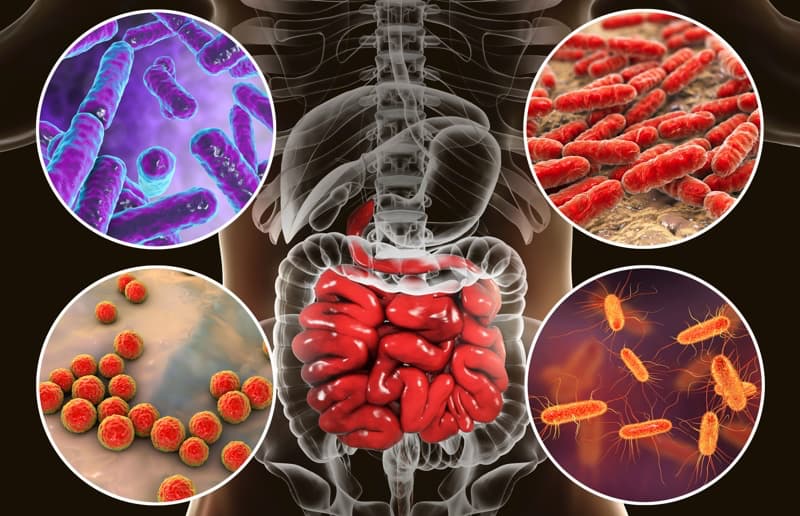

The aim of the present study is to demonstrate the effect of a mixture of four species of probiotics (Saccharomyces boulardii, Bifidobacterium lactis BB-12, Lactobacillus acidophilus LA-5 and Lactobacillus plantarum) in patients with symptomatic IBS who have culture verified SIBO and those who do not have. However, no study has ever tested the efficacy of probiotics in patients with IBS and SIBO proven by small intestinal culture.


The common findings of these trials are that a) efficacy refers to the improvement of symptoms of bloating and of diarrhea that are typical symptoms of the presence of SIBO and b) efficacy is usually found when mixtures of different species of probiotics are used. Four randomized clinical trials are available evaluating the efficacy of orally administered probiotics in IBS. The rationale behind their use as a therapeutic strategy in IBS is that orally administered probiotics may replace the overgrown enteric-type bacteria of SIBO. They are Gram-positive lactic acid-producing bacteria that constitute a major part of the normal intestinal microflora in animals and humans. The majority of probiotic bacteria belong to the Lactobacillus and Bifidobacterium genera. Oral supplementation with probiotics may be a rational approach for the eradication of SIBO and subsequently of the symptoms of IBS. In the latter publication coming from Athens, using variable cut-offs greater than 10^3 or 10^4 or 10^5 cfu/ml for the diagnosis of SIBO, the frequency of SIBO was significantly greater among sufferers than among non-sufferers from IBS. Based on systematic review of the literature but also on data generated in a cohort of 320 consecutive patients undergoing upper GI tract endoscopy, normal subjects are never greater than 10^3 cfu/m in the duodenum. Few studies are available with this design and they suggest a growth of colonic type of flora at counts equal to or greater than 10^5 cfu/ml as diagnostic of SIBO. of the duodenum after upper GI tract endoscopy. The gold-standard technique for the diagnosis of SIBO is the quantitative culture of the content of the proximal intestine i.e. Using this test, the prevalence of SIBO in patients with IBS ranged between 65 and 85%.
BACTERIAL OVERGROWTH IN GUT SERIES
The relationship between IBS and SIBO was found by a series of prospective observational studies using the lactulose and the glucose tolerance tests for the diagnosis of SIBO. Fermentation of dietary carbohydrates by the bacteria colonizers of SIBO ends with the over-production of gas generating thus symptoms of IBS. This overgrowth frames the syndrome of intestinal bacterial overgrowth (SIBO) where colonic type of bacteria predominate in the proximal parts of the small intestine.

Better understanding of the interaction of the host with intestinal microbiota the last decade led to the knowledge that many of the symptoms of IBS, mainly bloating and diarrhea, are related with the overgrowth of bacteria of colonic type in the small intestine. Irritable bowel syndrome (IBS) is the most common gastrointestinal disorder. Why Should I Register and Submit Results?.


 0 kommentar(er)
0 kommentar(er)
